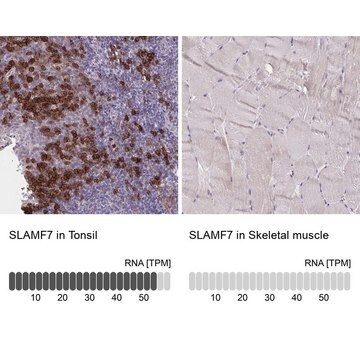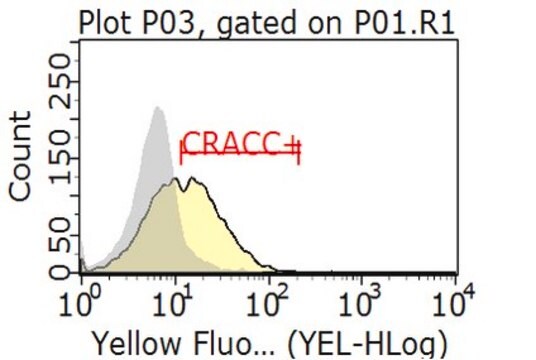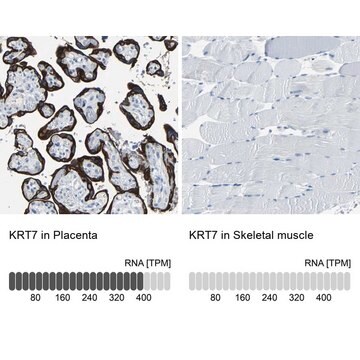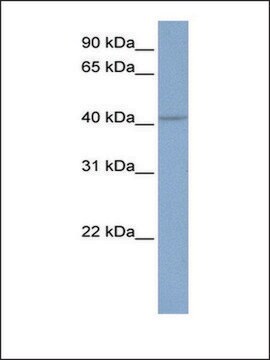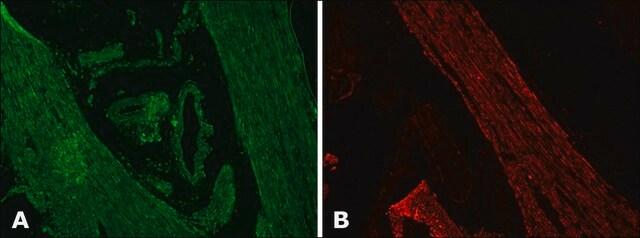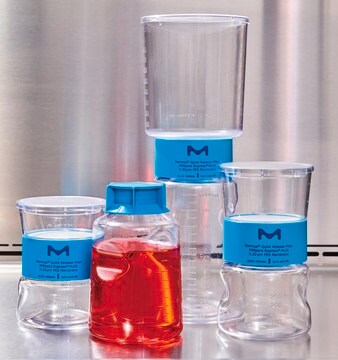MABF2093
Anti-SLAMF7 (CD319) Antibody, clone 162
clone 162, from mouse
Synonym(e):
SLAM family member 7, CD2 subset 1, CD2-like receptor-activating cytotoxic cells, CRACC, Membrane protein FOAP-12, Novel Ly9, Protein 19A, CD319
About This Item
Empfohlene Produkte
Biologische Quelle
mouse
Antikörperform
purified immunoglobulin
Antikörper-Produkttyp
primary antibodies
Klon
162, monoclonal
Speziesreaktivität
human
Verpackung
antibody small pack of 25 μg
Methode(n)
flow cytometry: suitable
immunohistochemistry: suitable (paraffin)
immunoprecipitation (IP): suitable
inhibition assay: suitable
Isotyp
IgG2bκ
NCBI-Hinterlegungsnummer
UniProt-Hinterlegungsnummer
Posttranslationale Modifikation Target
unmodified
Angaben zum Gen
human ... SLAMF7(57823)
Allgemeine Beschreibung
Spezifität
Immunogen
Anwendung
Entzündung & Immunologie
Flow Cytometry Analysis: A representative lot detected SLAMF7 (CD319) in Flow Cytometry applications (Bouchon, A., et. al. (2001). J Immunol. 167(10):5517-21).
Affects Function Analysis: A representative lot stimulated SLAMF7, which resulted in an increase SHIP-1 tyrosine phosphorylation in OPM2 and MM1S cells expressing EGFR-CD45. (Guo, H., et. al. (2015). Mol Cell Biol. 35(1):41-51).
Inhibition Analysis: A representative lot blocked the augmented capacity of human blood-derived macrophages to engulf Raji cells in response to anti-CD47 antibodies. (Chen, J., et. al. (2017). Nature. 544(7651):493-497).
Immunoprecipitation Analysis: A representative lot immunoprecipitated SLAMF7 (CD319) in Immunopreciptation applications (Bouchon, A., et. al. (2001). J Immunol. 167(10):5517-21; Tassi, I., et. al. (2005). J Immunol. 175(12):7996-8002).
Qualität
Immunohistochemistry (Paraffin) Analysis: A 1:50 dilution of this antibody detected SLAMF7 (CD319) in human tonsil tissue sections.
Zielbeschreibung
Physikalische Form
Lagerung und Haltbarkeit
Sonstige Hinweise
Haftungsausschluss
Sie haben nicht das passende Produkt gefunden?
Probieren Sie unser Produkt-Auswahlhilfe. aus.
Analysenzertifikate (COA)
Suchen Sie nach Analysenzertifikate (COA), indem Sie die Lot-/Chargennummer des Produkts eingeben. Lot- und Chargennummern sind auf dem Produktetikett hinter den Wörtern ‘Lot’ oder ‘Batch’ (Lot oder Charge) zu finden.
Besitzen Sie dieses Produkt bereits?
In der Dokumentenbibliothek finden Sie die Dokumentation zu den Produkten, die Sie kürzlich erworben haben.
Unser Team von Wissenschaftlern verfügt über Erfahrung in allen Forschungsbereichen einschließlich Life Science, Materialwissenschaften, chemischer Synthese, Chromatographie, Analytik und vielen mehr..
Setzen Sie sich mit dem technischen Dienst in Verbindung.